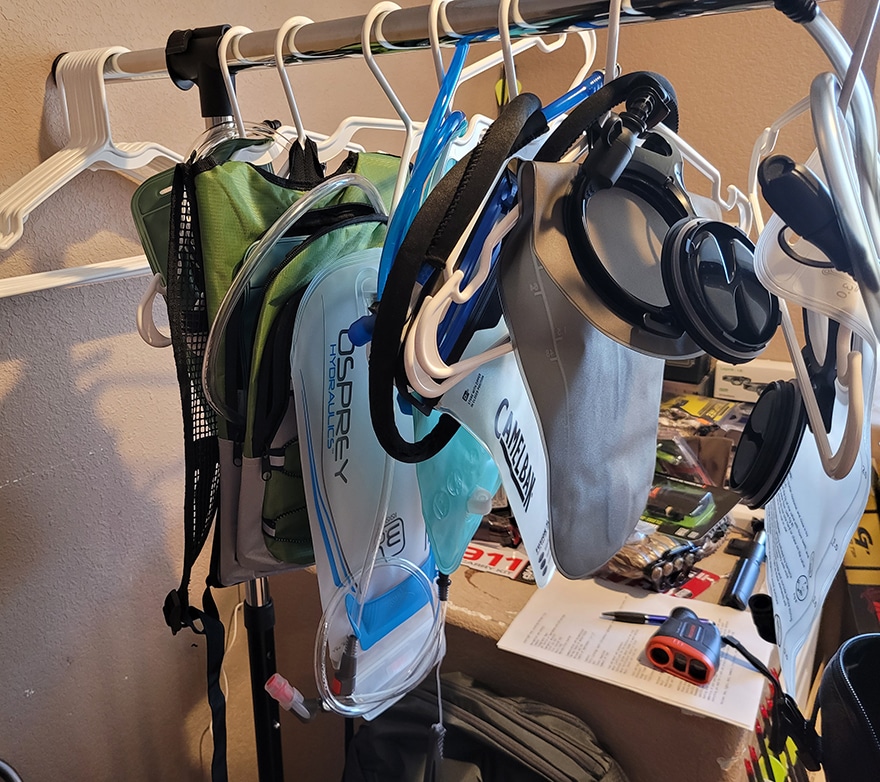Keeping Your Hydration Gear in Top Shape for Your Next Expedition
Hey there, fellow adventurers! If you’re anything like me, you know that a successful outdoor escapade requires more than just enthusiasm and a spirit of exploration. Having the right gear, like a reliable backpack hydration system, is crucial for staying hydrated and energized during your journeys. But what happens once the adventure is over? How you store your hydration system can significantly impact its lifespan and performance for future trips. In this “How to Store Your Backpack Hydration System” guide, I’ll share my personal strategies and insights on the best way to store your backpack’s hydration system after use. Let’s dive in and ensure our trusty gear stays in top-notch condition!
Table of contents
- Keeping Your Hydration Gear in Top Shape for Your Next Expedition
- The Importance of Proper Hydration System Storage
- Cleaning: The First Step Towards Effective Storage
- Ideal Storage Conditions for Your Hydration Gear
- Maintaining Your Hydration System During Long Breaks
- How to Store Your Backpack Hydration System Conclusion
- How to Store Your Backpack Hydration System FAQ
The Importance of Proper Hydration System Storage

Before we jump into the nitty-gritty of storage techniques, let’s discuss why this topic matters. Your backpack hydration system is more than just a water carrier; it’s a lifeline when you’re in the wilderness.
A well-maintained hydration system can last for years, providing you with consistent hydration whenever you need it. Neglecting proper storage, on the other hand, can lead to mold growth, funky odors, and even reduced functionality. Don’t let your gear suffer – let’s explore the best practices for keeping it in tip-top shape.
Importance of Water

Hydration is critical when hunting, backpacking, or exploring the great outdoors. The rigorous physical exertion, combined with the variable conditions typically encountered in outdoor environments, means that the body uses water at an accelerated rate. Water is essential for maintaining core body temperature, ensuring efficient metabolic processes, lubricating joints, and supporting cognitive functions. When backpacking, dehydration can quickly escalate from minor symptoms like dry mouth and fatigue to severe conditions such as heat exhaustion or even life-threatening heatstroke.
Moreover, the body can lose moisture faster than anticipated in elevated terrains or dry climates. Carrying adequate water and regularly replenishing lost fluids is vital. Even the most experienced backpackers can find themselves in a perilous situation without proper hydration, underscoring water’s fundamental role in ensuring a safe and enjoyable outdoor adventure.
Cleaning: The First Step Towards Effective Storage
The journey to proper storage begins with a thorough cleaning. After a thrilling adventure, it’s natural for dirt, sweat, and bacteria to accumulate in your hydration system. Here’s how I ensure mine remains pristine:
Steps for Cleaning Your Hydration System
- Rinse Immediately: As soon as your adventure concludes, take a few moments to rinse out your hydration reservoir, tube, and bite valve with clean water. This helps prevent any leftover fluids from becoming a breeding ground for bacteria.
- Use Mild Soap: Use a gentle soap or specialized cleaning solution for hydration systems. Avoid harsh chemicals that could damage the materials.
- Scrub and Rinse: Use a cleaning brush to scrub the interior of the reservoir, especially if it’s stained or has residue. Thoroughly rinse all components until no soap remains.
- Sanitize the Bite Valve: Remove the bite valve and soak it in a mixture of water and baking soda for a deeper clean. Rinse it well afterward.
- Air Dry: Allow all components to air dry completely before reassembling. Hang them upside down to ensure any remaining water droplets can escape.
Ideal Storage Conditions for Your Hydration Gear
With your gear sparkling clean, let’s discuss the optimal conditions for storage. Ensuring your hydration system remains mold-free and functional during its downtime requires a bit of consideration.

- Dry Before Storing: Ensure every component is completely dry before packing your hydration gear. Moisture left inside the reservoir or tube can lead to mold growth and unpleasant odors.
- Keep It Open: Leave the reservoir’s cap and bite valve open during storage. This promotes air circulation and prevents moisture buildup.
- Store in a Cool, Dry Place: Choose a storage area that’s away from direct sunlight and extreme temperatures. Heat can deteriorate the materials, and sunlight might encourage mold growth.
- Avoid Compressing: Don’t store your hydration system in a compressed or folded state for extended periods. This can weaken the reservoir’s structure and affect its longevity.
- Consider a Storage Bag: If you have the extra space, consider using a breathable storage bag to protect your hydration system from dust and pests.
Maintaining Your Hydration System During Long Breaks
Sometimes, life gets in the way, and your outdoor adventures take a hiatus. If you’re putting your gear into storage for an extended period, there are a few extra steps you can take to ensure its longevity.
- Thorough Inspection: Before storing the gear, give it a thorough inspection. Check for any signs of wear, such as cracks in the reservoir or damage to the tube.
- Remove the Reservoir: If possible, remove the reservoir from the backpack. This prevents prolonged pressure on the reservoir’s material, which could lead to weakening or deformation.
- Loosen Straps: If your hydration system is integrated into your backpack, loosen the straps that secure it. This reduces strain on the system’s connection points and prevents potential damage.
- Use a Frame: Consider using a lightweight frame to maintain the shape of your hydration reservoir while it’s in storage. This prevents creasing and maintains the reservoir’s structural integrity.
How to Store Your Backpack Hydration System Conclusion

And there you have it – my guide to storing your backpack hydration system after a thrilling adventure. Just as we cherish our gear during our expeditions, proper storage ensures that our trusty hydration systems are ready to quench our thirst on the next journey. Remember, a little effort in maintenance can go a long way in extending the lifespan and performance of your gear. From thorough cleaning to ideal storage conditions, these practices will keep your hydration system in top shape for countless adventures to come. So, keep exploring, stay hydrated, and take care of your gear like the valuable companion it is.
How to Store Your Backpack Hydration System FAQ
It’s not recommended to store your hydration system in the freezer. Freezing can damage the materials and affect the functionality of the bite valve.
It’s a good idea to replace the bite valve every 6-12 months, depending on how frequently you use it. Over time, the valve can wear out and affect water flow.
While some sources suggest using a mild bleach solution for cleaning, it’s generally better to avoid harsh chemicals that could potentially degrade the materials of your hydration system.



